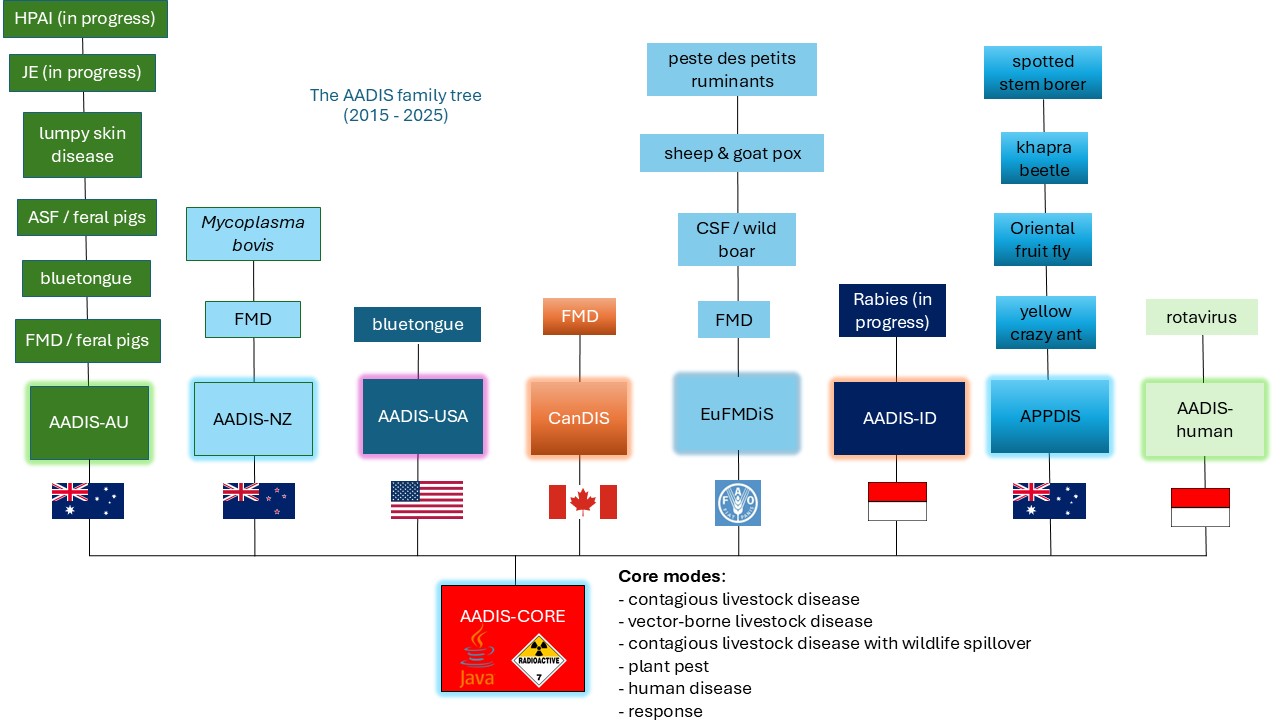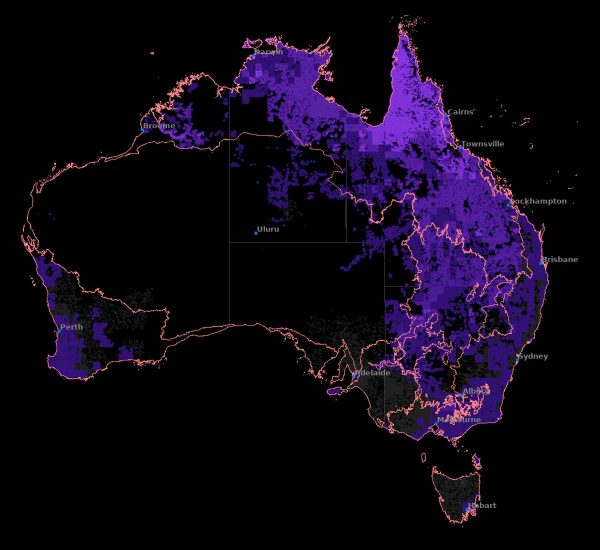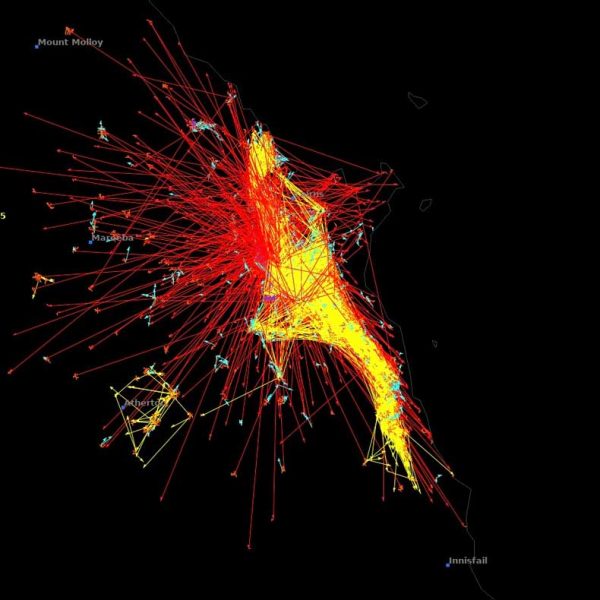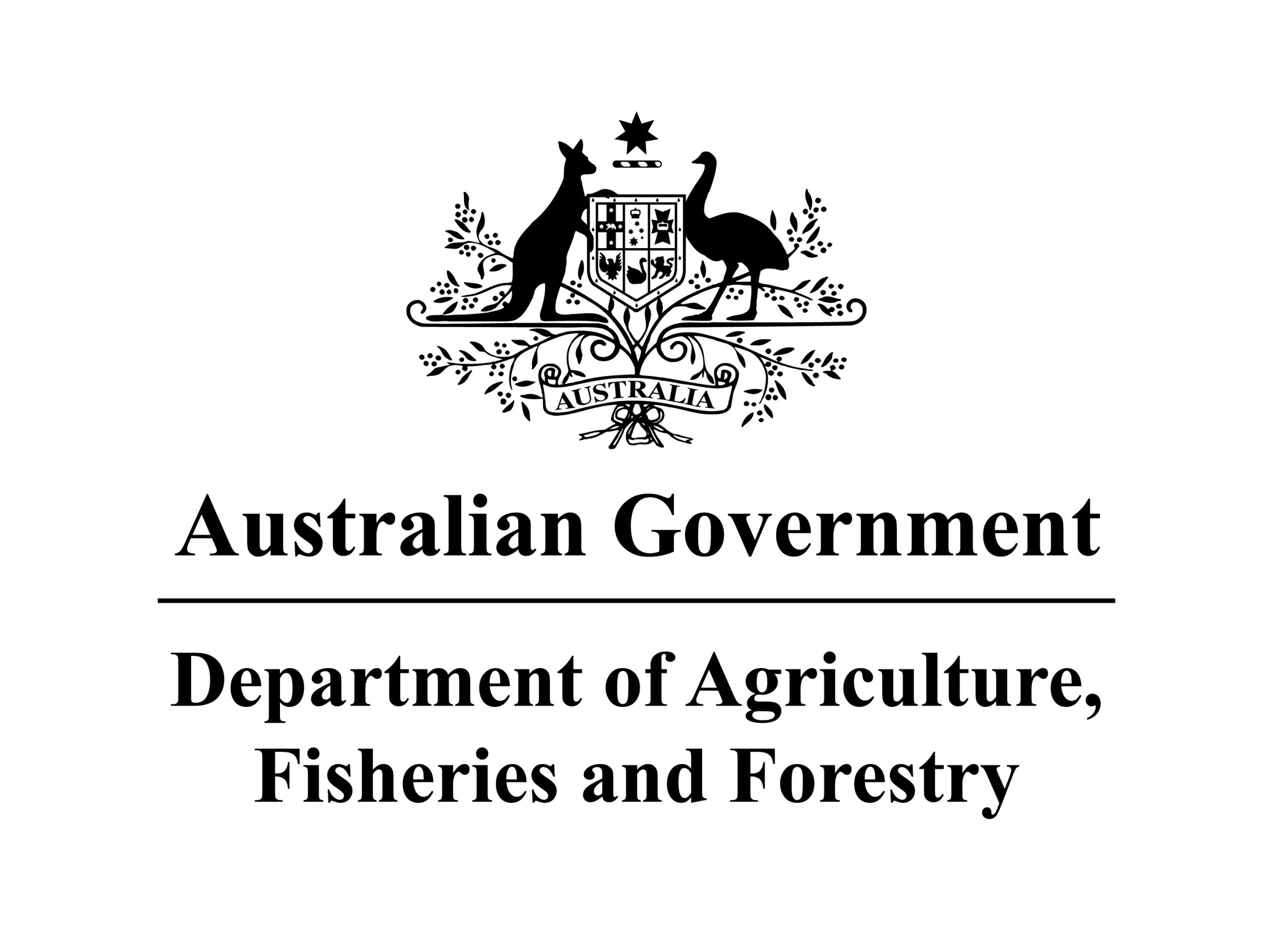ABOUT
Emergency animal diseases such as foot-and-mouth disease (FMD), African swine fever (ASF), lumpy skin disease (LSD), and highly pathogenic avian influenza (HPAI) can have significant impacts on animal health, society, and the economy, especially in ‘free’ countries such as Australia. A disease such as FMD can not only spread in domestic cattle, sheep, goats and pigs, but also in feral populations, and between feral and domestic populations. It is challenging to form cost-effective animal health policy when diseases are rare or absent and there is uncertainty as to their arrival, spread mechanisms, and likely time to detection.
Epidemiological models can assist with the preparation of animal health policy by simulating outbreaks of disease at different locations and at different times of the year, in order to assess the effectiveness of potential control strategies and the level of resourcing that might be required for the response.
Click on images below to enlarge:
The Australian Department of Agriculture, Fisheries and Forestry (DAFF) has long supported the development of epidemiological models as decision support tools to support the formation of animal health policy. Models can help inform complex policy questions such as the influence of resource shortfalls on disease control, potential benefits of emergency vaccination, early indicators on the potential extent of an outbreak, post-outbreak surveillance to support proof-of-freedom from disease, and the impact of post-outbreak management of vaccinated animals on return to trade.
The AADIS modelling framework arose from a research and development project undertaken by Richard Bradhurst at the University of New England in close collaboration with the Australian Department of Agriculture, Fisheries and Forestry between 2012 and 2015 (Bradhurst, 2015). The test case disease was foot-and-mouth disease (FMD) (Bradhurst et al., 2015) and the model was subsequently expanded to simulate vector-borne bluetongue disease (Kompas et al., 2017; Al-Riyami, 2020), African swine fever (Bradhurst et al., 2021), Mycoplasma bovis (Bradhurst et al., 2022), and lumpy skin disease (Bradhurst et al., 2024). The AADIS framework has also been expanded to model the spread of disease in wild populations and spillover into domestic populations (Bradhurst et al., 2021), the incursion, spread and management of agricultural and environmental pests (APPDIS, Bradhurst et al., 2021), and human disease (Geard et al., 2022). The European adaptation of AADIS is called EuFMDiS (Bradhurst et al., 2021) and is used to simulate transboundary diseases such as FMD, classical swine fever, sheep & goat pox, and peste des petits ruminants.
AADIS informs preparedness for emergency animal disease outbreaks through detailed data-driven simulations of spread, control options, resourcing and costs. During an actual outbreak, AADIS can be used in Response mode where simpler mathematical projections of spread are calibrated with case data as it becomes available. This allows the known outbreak to be blended with stochastic projections of the unknown outbreak to produce transmission risk heatmaps and projections of outbreak magnitude, mix of infected properties, and resourcing requirements.
AADIS has a novel hybrid modelling approach that combines analytical, agent-based, network, and cellular automata modelling techniques. AADIS captures disease epidemiology, regional and seasonal variability in transmission (e.g., due to environmental differences and seasonal livestock production and marketing patterns), and multi-jurisdictional approaches to control.
The AADIS framework comprises a single common core written in Java (Bradhurst, 2015). Individual models are instantiated by supplying the core with a set of CSV data files and three configuration files (country, disease and scenario). The data used to instantiate any given model (e.g., AADIS-FMD, EuFMDiS-DK-FMD, CanDIS-FMD) remains private to the users of that model.








